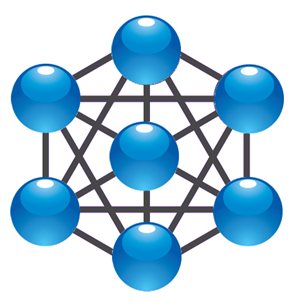A Second Warm Welcome to Wireless Mesh Networking
by Mike Fahrion
 Remember low power wireless mesh networks? A decade ago they were the cover story in virtually every technical magazine. Industry analysts were raving about them. They were spawning one new startup after another. Folks everywhere were dazzled by promises of ultra-resilient, micro powered, wireless networks that would have more than enough bandwidth to handle sensor and I/O data traffic.
Remember low power wireless mesh networks? A decade ago they were the cover story in virtually every technical magazine. Industry analysts were raving about them. They were spawning one new startup after another. Folks everywhere were dazzled by promises of ultra-resilient, micro powered, wireless networks that would have more than enough bandwidth to handle sensor and I/O data traffic.
I was no exception. They had me at “hello”.
So I jumped right on board. B+B SmartWorx collaborated with a number of different startups. We helped evaluate their technology. We built many of their prototypes and development kits. We put together pilot projects that we tested with beta customers. It was all very exciting.
But, in the end, the technologies of the day couldn’t meet our expectations. Those old wireless mesh networks fell short on resilience. Their power consumption was still too high. And they were guilty of one of the worst sins in industrial networking – they weren’t easy to use. Early wireless mesh tech could be very useful in the appropriate applications, but it definitely wasn’t the Next Big Thing.
Take ZigBee, for example. It was demonstrably unreliable in harsh RF environments. Its dependence upon powered “meshing” nodes was a serious weakness. In the end, Zigbee could only succeed in applications where intermittent data connections were acceptable. ZigBee has found comfortable niches in areas like home automation and smart lighting, but the industrial process world largely rejected it.
But technology never stands still. A lot of development was done on top of the IEEE802.15.4 physical layer, the low cost physical layer common to all of the meshing technologies. And in 2012 the IEEE802.15.4e standard added standardized time synchronized channel hopping. Low power wireless mesh networking became an attractive proposition again, and new options became available. The backers of the wired HART protocol, for example, combined some of the most robust of the new mesh technologies into a wireless-Hart solution, which has been proven to successfully carry mission critical data for process control in some of the harshest RF environments.
Another option is SmartMesh IP, from Linear Technology’s Dust Networks group. SmartMesh IP is built for IP compatibility, and is based on 6LoWPAN and 802.15.4e standards. Compared to competing solutions SmartMesh IP uses up to eight times less power, even in harsh, dynamically changing RF environments. Cost effective, IP compatible, and highly scalable, SmartMesh IP is an excellent way to create smart, low power network infrastructure, and an impressive derivative of those early days of wireless mesh networks.
What issues does a good mesh networking technology resolve?
- Network nodes must function on micro-power. We want to be able to place wireless sensor nodes in inconvenient locations where power might not be available.
- Every node on the network must be a low power, repeating mesh node. Much of the elegance and scalability of a wireless mesh network is lost if users have to flesh out the network with special nodes that require more power. That’s just a lot of extra infrastructure without value. This was one of Zigbee’s weaknesses.
- To reserve power, each node must be able to sleep, and it must make efficient use of its awake time. Collision avoidance should be built in so that radios don’t stay awake when it isn’t necessary.
- Multipath interference is unavoidable in real life environments. The wireless mesh system must dynamically recognize interferers and adapt its channel usage to avoid channels that have been rendered useless by multipath fading.
- Local wireless environments are always changing, so the system must have true path diversity and it must be able to manage it dynamically.
If you put all of those ingredients together you end up with a wireless mesh network that can potentially give you 99.999 percent reliability. That’s orders of magnitude better than single path wireless. And because that reliability is a result of architectures that avoid problems rather than indulging in retries, error corrections, and endless delays, you’ve got a power consumption profile that supports outstanding battery life and even opens the door to energy harvesting applications.
When combined with a gateway that gives it access to the Internet, there’s no reason that a low power wireless mesh network shouldn’t send its data all the way up to the cloud. That adds some real magic. Not only can the mesh network position remote sensors and collect data from locations that were formerly impractical, thanks to considerations like available power, cable connections or the RF environment, it can now feed that data to cloud-based applications that will combine it with other inputs to produce sophisticated business decisions. These cloud-based applications will give low power wireless mesh networks even more value, weaving them into the larger fabric of the industrial M2M “Internet of Things”.
There have been a few false starts and a few wrong turns. But after a decade of development, low power wireless mesh networking has finally arrived. And I couldn’t be more pleased. It’s been awhile, but welcome back, old friend.
Recommended Posts

Co-Creation, Paving the Way to a More Connected Future
November 27, 2018

The Benefits of a ‘Do It For Me’ Mentality in the IIoT
October 5, 2018

Why You Need to ‘Mind the Gap’ in Manufacturing Technology
August 31, 2018
